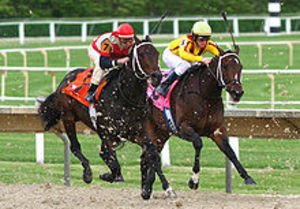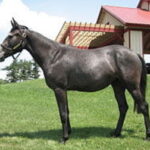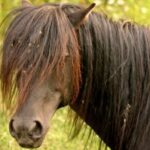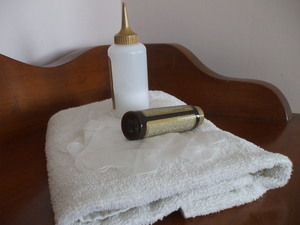Thoroughbred horse racing is a tradition-bound sport, including how the how the horses are bred and trained. One traditional method of training is called high intensity intermittent training or HIIT. The horse is warmed up and then asked to sprint at maximum or near-maximum speed with pauses in between sprints at a slower gait, such as a walk. A new study from Germany’s Arbeitsgruppe Pferd suggests that HIIT is a training method that does more harm than good.
Arbeitsgruppe Pferd, formed in 1993, concentrates specifically on medical studies on sport horses, including Thoroughbred racehorses. The group notes that more studies need to be done in order to confirm the results of this initial study.
Study Specifics
Eight 4 and 5-year-old racehorses not considered racing fit were chosen for the study, although all eight had competed in races and so were not completely out of shape. All horses were given a two-week period to gain fitness before starting the study in order to minimize the chance of injuries. The study measured the levels of V4, a lactate apparent in the blood of fit horses.
The horses were first warmed up and then performed two sprints at 100 meters and walked in between sprints. On days they did not sprint, they went out on the track and had with five minutes of walking, five minutes of trotting and then five minutes of cantering and wrapped-up with a five minute cool down period before going back to the barn.
But two weeks later, the number of sprints in a workout was raised to three. One week after that, the number of sprints was raised to four. At two-week intervals, the horse’s V4 levels were checked. After 6 weeks, the V4 levels went down, down, down instead staying the same or rising. This indicates the horses were not fit – despite their training regimen.
Other Problems
Problems with HIIT were raised years ago by horse lovers and veterinarians. Lon D. Lewis, author of Equine Clinical Nutrition: Feeding and Care (John Wiley & Sons; 1995), notes that high-intensity training can cause a racehorse to suffer a pulmonary hemorrhage. This is due to the horse being asked to give it all or almost all he has rather than how many miles galloped during a training session.
Although high intensity training may have worked for racehorses one hundred years ago, the modern Thoroughbred is a vastly different creature from those in the early 1900s. The stud book had only been closed less than 100 years and the gene pool was still large. But after Canadian-bred 1964 Kentucky Derby winner Northern Dancer retired to stud, the gene pool would shrink. Most Thoroughbred bred specifically for racing will have Northern Dancer at least once in their immediate (five-generation) pedigrees.
Different times with a different animal call for different training and breeding measures. But just if any significant changes to the Thoroughbred racing business will change remains to be seen.
References
Lewis, Lon D. Equine Clinical Nutrition: Feeding and Care. John Wiley & Sons; 1995.
Bazay, Casie, BS, NBCAAM. “Efficacy of High-Intensity Training for Racehorses.” The Horse. December 11, 2011. http://www.thehorse.com/ViewArticle.aspx?ID=19261
BBC.com Nature. “Are Racehorses Being Bred to Destruction?” Matt Walker. November 18, 2011. http://www.bbc.co.uk/blogs/wondermonkey/2011/11/bred-to-destruction.shtml





